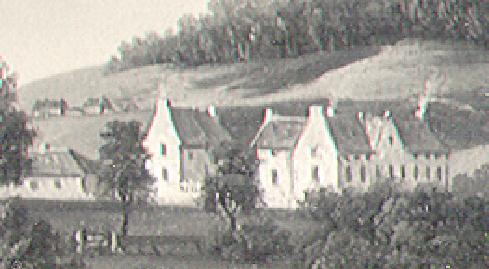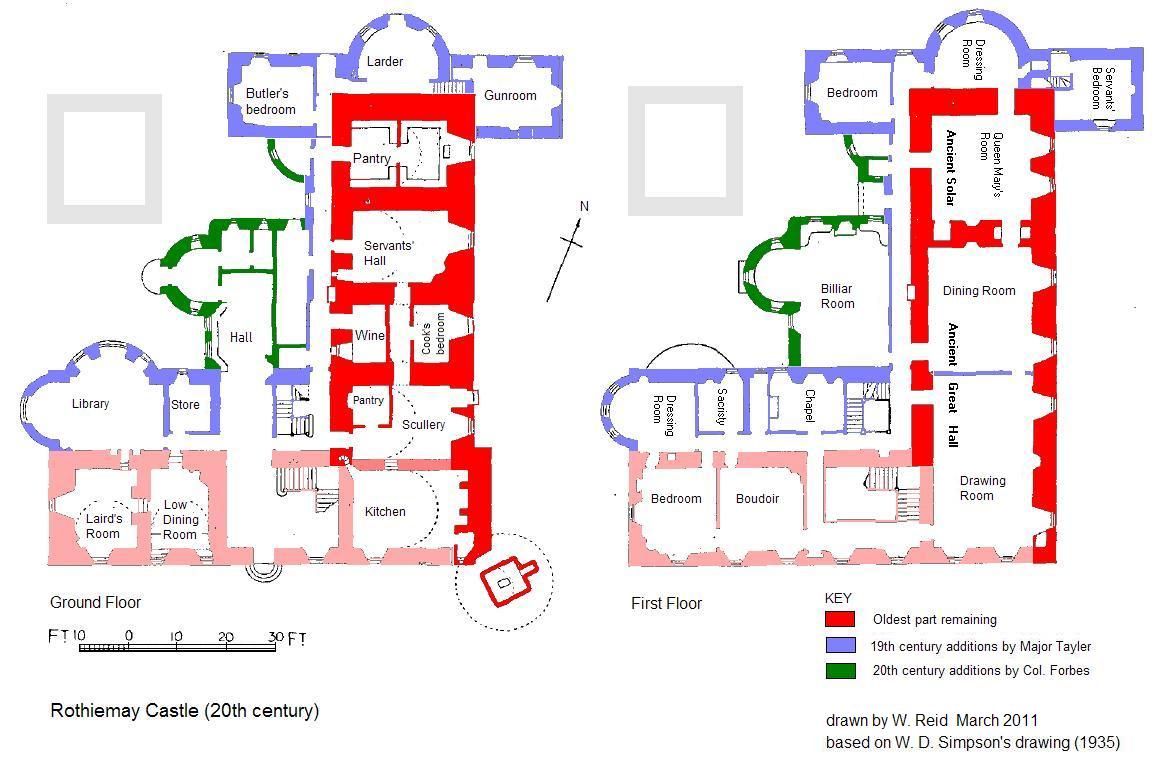The Castle and Estate
- Rothiemay Castle
- Mayen
- Avochie
- The Home Farm Steading
- Farming 200 years ago
Interior marble from the castle
*tirr'd - unroofed - e.g. the surface divots on the moss are tirr'd before cutting peat
Rothiemay Castle
Rothiemay or "Rath-may" means the fortress in the meadow.
No record of the early fortifications exists but W. Douglas Simpson has suggested that the location fits all the requirements for a Norman fortification, so it is likely that a wooden baillie stucture existed on the site before any stone tower was erected.
Historically, Rothiemay was made into a Barony with associated Church and Castle during the thirteenth century - the first mention comes in 1264 when it was recorded that the lands had been escheated to the Crown; it remained in royal hands until 1291.Harding's Map of Scotland of about 1465 shows the "Castells of Strathbolgy, of Rothiemay and of Dony Doure (Dunideer)," which testifies to its importance.
In 1577 an English agent reported of "the Lord Saltoun and Rothiemay, by name Abernethy," that "his house called Saltoun beside Haddington stands in Lothian; but "his chief house and continual residence called Rothiemay is in the north, a palace, very fair."

Rothiemay Castle in 1767 (from SW)

Plan of castle
In 1780 Lord Fife's agent reported that a storm of wind had "tirr'd" the old tower and "great part of the south side." Extensive rebuilding work in the Scottish Classical Style was carried out in 1788 by the 2nd Earl of Fife to make a modern mansion house.
In 1795 the Earl himself visited, and finding it in sorry disrepair, announced his intention of "pulling down the old side as the roof in some parts is fallen in," and making the rest of the building "watter tight." The old Statistical Account of the parish, published only two years later, records that "the most ancient part of the house, which was fast going to ruin, his lordship has "lately taken down, and has repaired and furnished the rest in a mannner which does honour to his taste."
The walls of the oldest part of the castle formed an L-shape, facing south and east, and these walls were constructed of enormous field boulders built in places almost 2.4m. thick. Within these walls the ceilings were low and stone vaulted on the ground floor, and formed the kitchen, cellar and servants' quarters. Signs of subterranean building extending from the SE corner of the kitchen, suggested that a passageway of some kind may have existed from there some way underground.
Above the kitchen and servants' rooms, extending the whole length of the eastern side, was the Baronial Hall, measuring 19.3m. by 6.2m.; at the top or northern end of the hall was one of the massive cross-walls (about 1.37m. thick) which divided the main room from the Solar, later known as Queen Mary's Room, measuring 6.7m. by 6.2m. The whole of the original east wing measured 22.9m. by 6.2m.

Rothiemay Castle in the 20th Century (from NW)
Further important alterations and additions were made by Major Tayler, who was granted a lease of Rothiemay House in 1809, when his wife's father became the third Lord Fife. In the 19th century the main hall was divided up and a thin partition was put up in order to form the Drawing Room and Dining Room.
In 1901 Col. Forbes added the tall porch tower in the Scottish Baronial Style.
The castle was completely demolished in 1964.
